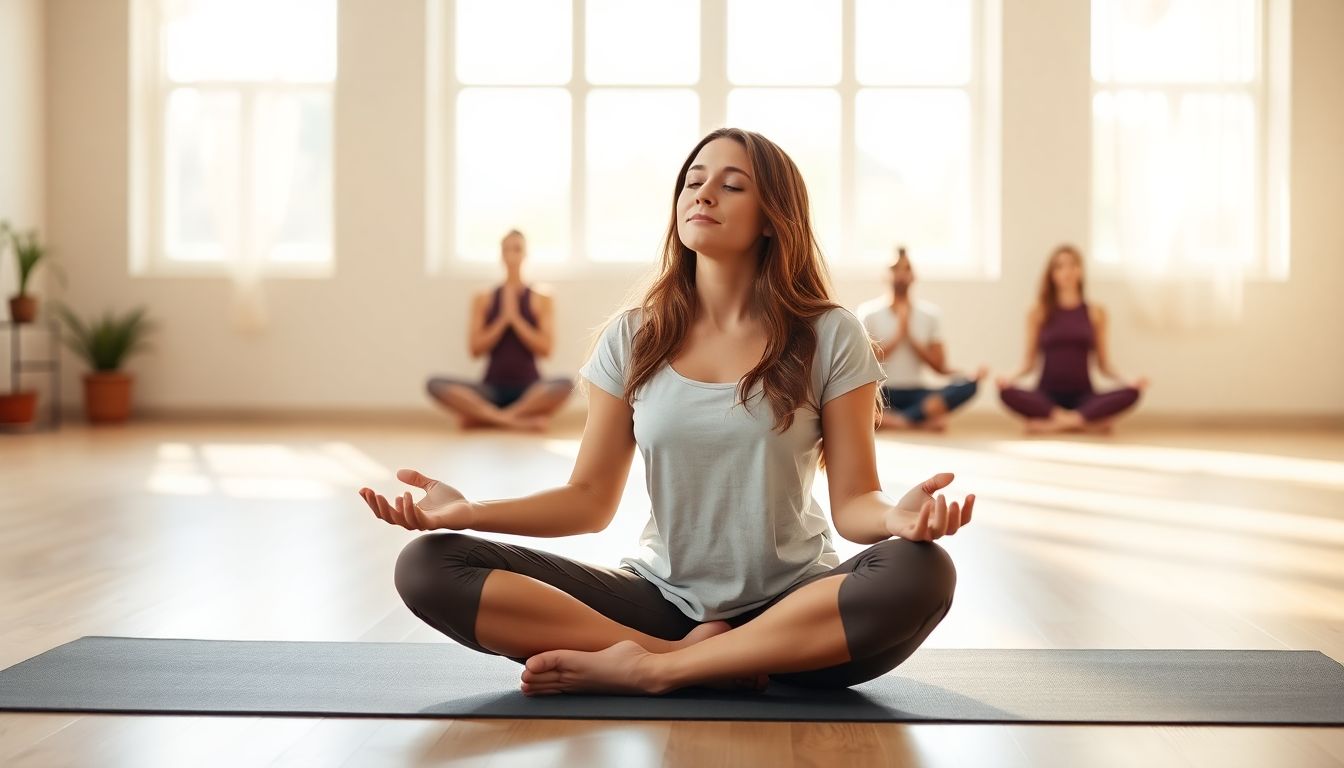
Finding calm in a chaotic world seems harder every day. Stress and anxiety can feel overwhelming, and many people are searching for effective ways to cope. One ancient practice has been gaining attention for its potential to help: yoga. This article will explore how yoga helps reduce stress and anxiety, leading you toward a more peaceful life.
The Modern Stress Epidemic
Statistics show that stress affects a significant portion of the population. According to the American Psychological Association, nearly 75% of adults experience moderate to high levels of stress regularly. This prevalence leads to numerous mental health issues, including anxiety and depression. Yoga offers a practical and accessible way to combat this growing concern.
Yoga: An Ancient Practice for Modern Problems
Yoga dates back thousands of years, originating in ancient India. Initially developed as a spiritual practice, it has evolved into various forms, emphasizing physical postures, breath control, and meditation. Today, many people turn to yoga as a solution for stress and anxiety, finding solace in its mind-body approach.
What to Expect
This article covers the science behind yoga’s stress-relieving effects, various yoga poses that promote relaxation, mindfulness and meditation practices, ways to integrate yoga into your daily routine, and tips for maintaining your stress reduction journey.
The Science Behind Yoga's Stress-Relieving Effects
The Mind-Body Connection
Understanding the connection between the mind and body is crucial in managing stress. The nervous system plays a significant role in how we respond to stressors. Yoga helps to activate the parasympathetic nervous system, which promotes relaxation and calmness.
Hormonal Influence
Stress triggers the adrenal glands to release hormones like cortisol and adrenaline. High cortisol levels can lead to various health issues, including weight gain and impaired immune function. Research indicates that practicing yoga can lower cortisol levels, helping you feel more balanced.
Neurotransmitter Regulation
Yoga also affects vital neurotransmitters like serotonin and GABA, which regulate mood and anxiety levels. Studies have shown that regular yoga practice increases GABA levels, leading to reduced anxiety and enhanced feelings of well-being.
Yoga Poses for Stress and Anxiety Relief
Restorative Poses
Restorative yoga poses such as Child’s Pose and Legs-Up-the-Wall Pose are excellent for stress relief.
- Child's Pose: This pose encourages deep breathing and relaxation.
- Legs-Up-the-Wall: A calming pose that aids circulation and promotes tranquility.
Gentle Flow Sequences
Gentle flow sequences can also ease tension. Try combining poses like Cat-Cow, Downward Dog, and Forward Bend to create a short routine. Video example here.
Breathing Techniques (Pranayama)
Breathing techniques, known as pranayama, are vital in yoga. Techniques such as Ujjayi breath help slow your heart rate and calm the mind. Focusing on your breath can shift your body from stress to relaxation.
Mindfulness and Meditation in Yoga
Mindfulness in Asana
Being present during your practice is essential. Mindfulness encourages awareness of thoughts and feelings, allowing you to feel more grounded.
Guided Meditation
Guided mediation provides a helpful structure for reducing stress. Many apps and online resources offer guided sessions targeting anxiety reduction.
Yoga Nidra
Yoga Nidra is a deep relaxation technique that promotes stress relief. This practice helps you enter a state between sleep and wakefulness, allowing for profound mental relaxation.
Incorporating Yoga into Your Daily Routine
Building a Consistent Practice
Establishing a regular yoga practice can be challenging but rewarding. Aim for a few minutes daily. Start small, then gradually increase your practice time.
Finding the Right Yoga Style
With so many styles available—like Hatha, Vinyasa, or Yin—choose one that resonates with you. Experiment and see what feels best.
Seeking Professional Guidance
Consider finding a qualified yoga instructor. They can provide personalized guidance and help you develop your practice safely and effectively.
Beyond the Mat: Maintaining Stress Reduction
Lifestyle Changes
Adopting complementary lifestyle changes can significantly enhance your stress management. Focus on a balanced diet, regular exercise, and sufficient sleep to support your yoga practice.
Stress Management Techniques
In addition to yoga, consider journaling or spending time in nature as effective coping mechanisms. Engaging in hobbies or connecting with loved ones can also boost your mental health.
Seeking Professional Help
If stress becomes overwhelming, do not hesitate to seek professional help. A therapist or healthcare provider can offer support tailored to your needs.
Conclusion: Your Journey to a Calmer, More Balanced You
Yoga can be a powerful tool for reducing stress and anxiety. By incorporating yoga poses, mindfulness, and meditation into your life, you can pave the way to better mental health. Embrace this journey and discover the many benefits of yoga.
Key Takeaways
- Yoga reduces stress by calming the nervous system and lowering cortisol levels.
- Specific poses and breathing techniques can promote relaxation.
- Consistent practice and lifestyle changes enhance stress management.
Call to Action
Start your yoga journey today! Explore classes or online resources and take the first step toward a calmer you.